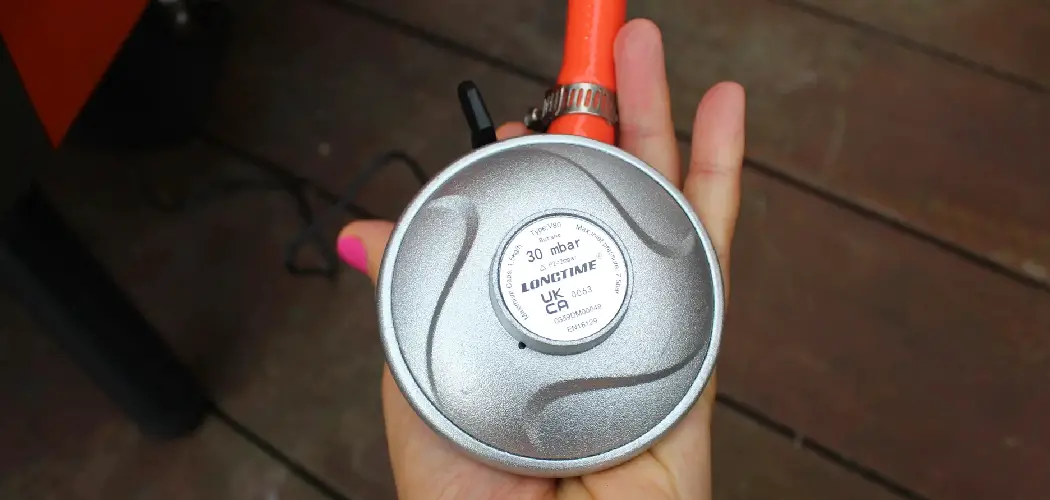Proper gas regulator sizing is crucial for maintaining a stable and controlled gas flow. It ensures the system operates within its designed parameters, delivering the necessary amount of gas to equipment without fluctuations.
Incorrectly sized regulators can lead to various issues such as leaks, pressure drops, or overpressure, which can cause equipment malfunctions and pose significant safety hazards. Ensuring the right size prevents these risks and prolongs the lifespan of your equipment.
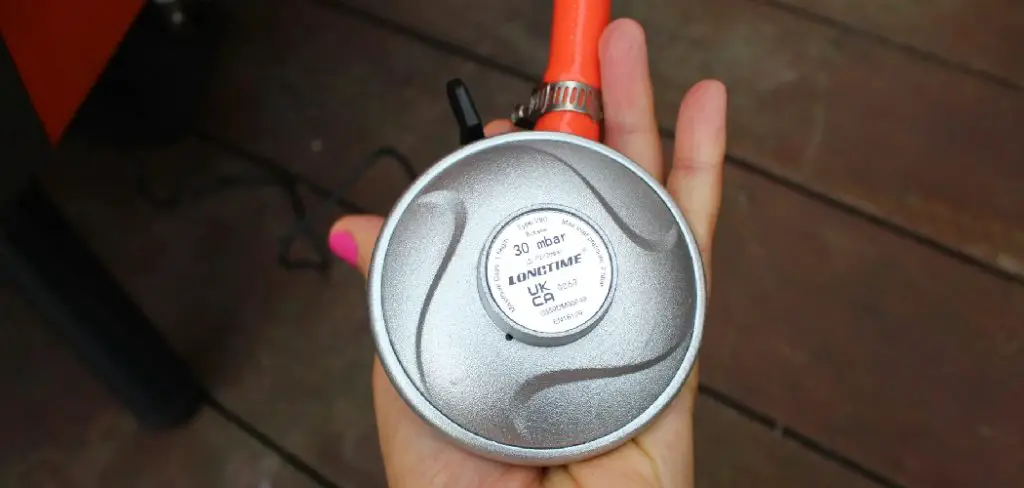
This guide aims to walk you through the process of how to size a gas regulator accurately. Whether you are dealing with residential, commercial, or industrial applications, you will find comprehensive instructions and tips to ensure your gas systems are both efficient and safe.
Understanding Gas Regulators
Function of a Gas Regulator:
- Pressure Control:
Gas regulators play a vital role in maintaining a consistent pressure level within a gas system. By automatically adjusting the flow of gas, they ensure that the downstream pressure remains within a set range, which is essential for the proper functioning of appliances and equipment.
- Safety Mechanism:
Regulators also serve as a safety mechanism to prevent overpressure situations. They are designed to reduce the risk of hazardous pressure build-ups that could lead to leaks, explosions, or equipment damage.
Types of Gas Regulators:
- Single-Stage Regulators:
Single-stage regulators reduce the gas pressure in one step. They are suitable for applications where inlet pressure does not vary significantly. These regulators are straightforward, cost-effective, and typically used in applications without critical pressure control.
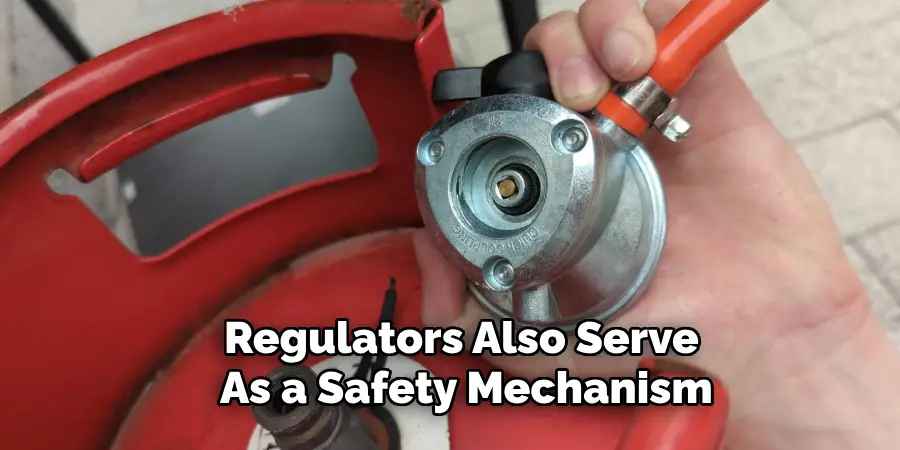
- Dual-Stage Regulators:
Dual-stage regulators, on the other hand, reduce gas pressure in two steps. This two-stage reduction provides more accurate and stable pressure control, making them ideal for applications that require precise pressure regulation over a wide range of inlet pressures.
- Specialty Regulators:
Specialty regulators are designed for specific gases and applications. For instance, propane regulators are tailored to handle propane gas’s properties and pressure requirements. Similarly, natural gas regulators are optimized for natural gas systems, and industrial gas regulators cater to the unique needs of various industrial gases like oxygen, nitrogen, or acetylene. These regulators often have features that enhance their performance and compatibility with their respective gases.
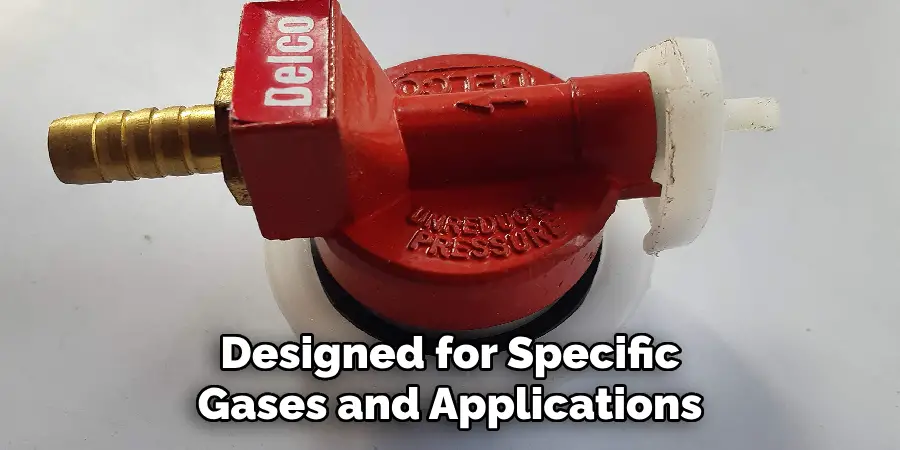
Understanding these functions and types of gas regulators is the first step in ensuring a safe and efficient gas system by selecting the appropriate regulator for your specific needs.
How to Size a Gas Regulator: Key Factors in Sizing a Gas Regulator
Gas Type:
- Characteristics of Different Gases:
The properties of different gases play a crucial role in selecting the right regulator. Factors such as density, viscosity, and energy content can affect how the gas flows and how the regulator must manage this flow. For example, gases with higher density can exert more pressure on the regulator’s components, necessitating more robust construction.
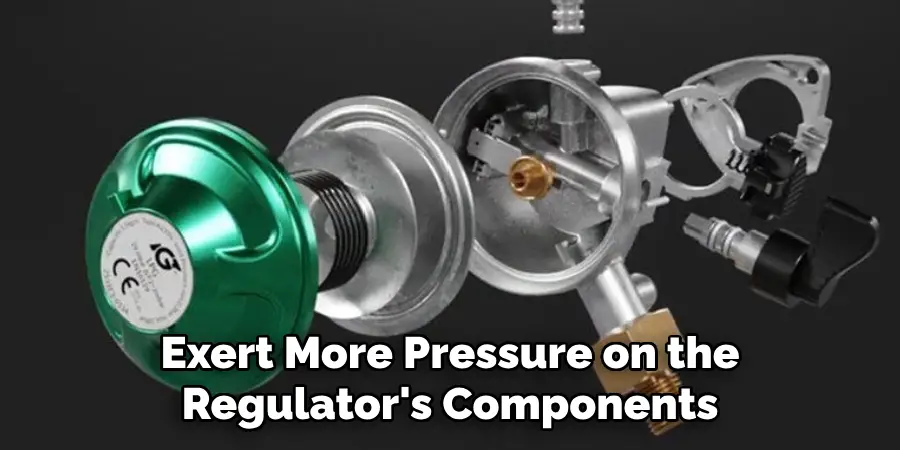
- Common Gases:
- Natural Gas: Natural gas is commonly used in both residential and commercial applications. It has a relatively low density and high energy content, which makes it efficient for heating and cooking. When sizing a regulator for natural gas, it is essential to consider the pressure at which the gas is supplied and the specific requirements of the appliances it will serve.
- Propane: Propane is another frequent choice, especially in rural or off-grid areas. It has a higher density and energy content than natural gas, meaning it provides more energy per unit volume. This also means that propane systems typically require regulators capable of handling higher pressures and ensuring safety in operation.
Flow Rate Requirements:
- Measuring Flow Rate:
Determining the flow rate is foundational for correctly sizing a gas regulator. The flow rate is often measured in cubic feet per hour (CFH) or liters per minute (LPM). To calculate the required flow rate, you should sum the flow rates of all the appliances or systems that will be using the gas concurrently. Manufacturer specifications usually provide the required flow rates for appliances.
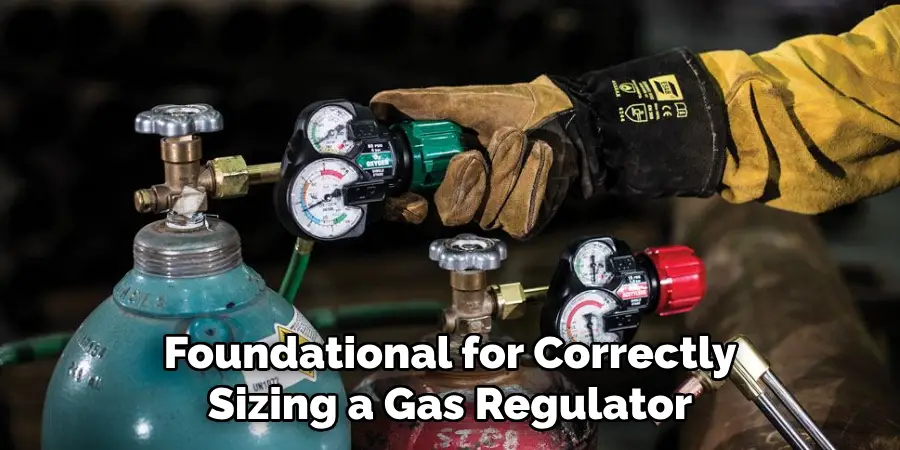
- Typical Flow Rates:
- Residential Stoves: Typically require a flow rate of 50 to 100 CFH.
- Water Heaters: You may need between 150 to 250 CFH, depending on the size and model.
- Commercial Kitchens: Systems in restaurants and large kitchens can require higher flow rates, often in the range of 500 to 1000 CFH.
- Industrial Applications: These can vary widely but frequently require very high flow rates, sometimes well over 1000 CFH.
Inlet and Outlet Pressure:
- Inlet Pressure:
Understanding the incoming pressure from the gas supply is imperative. This pressure can vary based on the source, whether it’s a utility line or a high-pressure tank. Knowing this will help in selecting a regulator that can handle the maximum inlet pressure without compromising performance or safety.
- Outlet Pressure:
The required outlet pressure is dictated by the needs of the end-use equipment. Most appliances have specific pressure requirements needed for optimal operation. Ensuring the regulator can supply gas at these pressures consistently is critical for performance and safety.
Application Type:
- Residential vs. Commercial:
The type of application influences the choice of regulator significantly. Residential gas regulators are typically designed for lower flow rates and lower pressures, given the relatively modest demands of household appliances. Conversely, commercial regulators must handle higher flow rates and more substantial pressure variations due to the demands of multiple, high-consuming appliances.
- Specific Equipment Needs:
Different types of equipment have unique requirements that regulators must meet. For example, furnace regulators are designed to provide consistent pressure despite fluctuations in input pressure, while commercial kitchen regulators need to handle the rapid cycling of multiple high-demand appliances. Industrial applications might demand highly specialized regulators that can manage extremely high flow rates and specific pressure conditions unique to manufacturing processes.
Understanding these key factors ensures the selection of an appropriate gas regulator, contributing to the safe and efficient operation of gas systems in various settings.
Calculating Flow Rate and Pressure Requirements
Determining Flow Rate:
- Summing Appliance Demands:
To accurately size a gas regulator, summing the flow rates of all connected appliances is essential. Each appliance’s gas consumption is typically specified by the manufacturer in units such as cubic feet per hour (CFH) or liters per minute (LPM). By adding these values together, one can determine the total gas flow rate required to meet the demands of the entire system.
- Peak Demand Calculation:
It is crucial to account for peak usage times when calculating the required flow rate. Peak demand refers to the maximum gas consumption when all appliances operate simultaneously. This ensures the regulator can handle the highest possible demand, avoiding performance issues or safety hazards.
Pressure Drop Considerations:
- Understanding Pressure Drop:
Pressure drop, the reduction in pressure as gas moves through the system, can significantly impact gas flow. Factors such as pipe length, diameter, and the number of fittings and valves contribute to pressure drop. Understanding how these variables affect the overall pressure is crucial to ensuring the system operates efficiently.
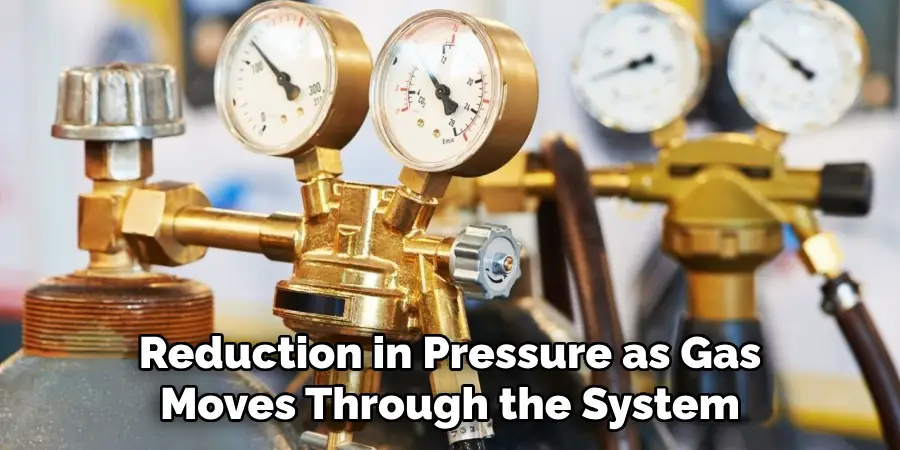
- Calculating Acceptable Pressure Drop:
Methods to calculate acceptable pressure drop involve determining the maximum permissible pressure loss in the system while maintaining efficient gas flow. This requires checking manufacturer guidelines and utilizing pressure drop charts or calculators. Ensuring the pressure drop stays within acceptable limits is vital for the optimal performance of all connected appliances.
Safety Margins:
- Including Safety Margins:
Adding safety margins to calculations is essential to accommodate unexpected variations and ensure operational safety. Safety margins act as a buffer to handle gas supply or demand fluctuations, preventing underperformance or potential hazards.
- Regulatory Standards:
Compliance with local codes and standards is mandatory when determining flow rate and pressure requirements. Regulatory standards specify the safety margins and calculation methods that must be followed to ensure a safe and efficient gas system. Adhering to these standards ensures safety and prevents legal and operational issues.
By carefully calculating flow rate and pressure requirements, considering factors like peak demand, pressure drop, and safety margins, and ensuring compliance with regulatory standards, one can select the appropriate gas regulator for a safe and efficient gas system.
Selecting the Right Regulator
Choosing a Single-Stage vs. Dual-Stage Regulator
When selecting a gas regulator, one of the fundamental choices involves deciding between a single-stage and dual-stage regulator.
- Single-Stage Regulators:
- Pros: Single-stage regulators are generally simpler in design and operation. They reduce the inlet pressure to the desired outlet pressure in one step, making them quicker and often less expensive than dual-stage models. This simplicity can be advantageous in applications with less demanding pressure requirements.
- Cons: The main limitation of single-stage regulators is their inability to maintain a consistent outlet pressure as the inlet pressure drops, such as when a gas cylinder depletes. Consequently, they may not be ideal for applications requiring precise pressure control over long durations.
- Dual-Stage Regulators:
- Pros: Dual-stage regulators reduce the pressure in two steps, providing a much more stable and consistent outlet pressure. This stability is beneficial for applications requiring precise gas pressure control over time, such as in industrial processes or scientific research.
- Cons: While offering greater accuracy and reliability, dual-stage regulators are typically more complex and costly. Their intricate design necessitates more maintenance and may present an over-engineered solution for simpler applications.
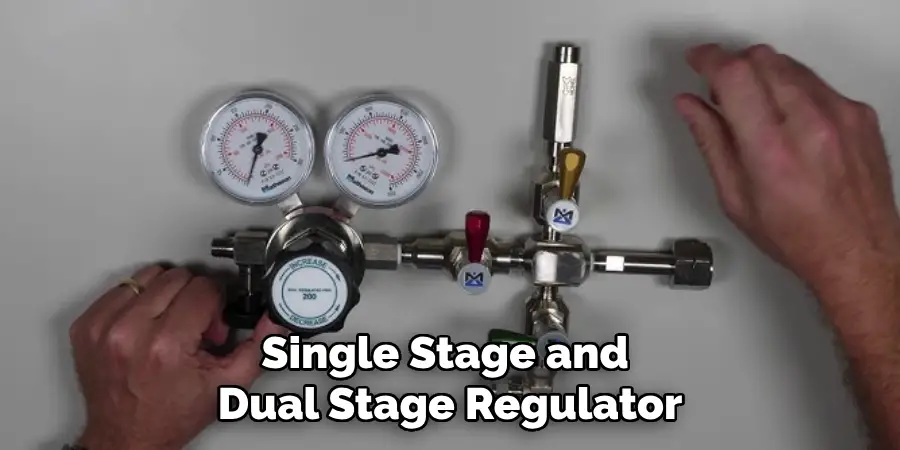
Material Considerations
Selecting the right materials for a gas regulator is crucial for ensuring compatibility, durability, and longevity.
- Compatibility with Gas Type:
- Importance: Different gases have varying chemical properties that can interact differently with regulator materials. For example, aggressive gases like ammonia or chlorine require regulators made from materials resistant to corrosion and chemical reaction. Using incompatible materials can lead to deterioration, leakage, or equipment failure.
- Recommendations: It is essential to consult compatibility charts provided by manufacturers or industry standards to determine the best material for the specific gas type in use.
- Durability and Longevity:
- How Material Choices Affect Durability: The choice of material impacts the regulator’s durability and lifespan significantly. Common materials include brass, stainless steel, and aluminum. Brass is durable and widely used for a range of gases, while stainless steel offers superior resistance to corrosion, particularly for high-purity or reactive gases. Aluminum is lightweight and corrosion-resistant but may not be suitable for high-pressure applications.
- Recommendations: Investing in higher-quality materials like stainless steel can enhance the regulator’s lifespan and performance in applications where long-term reliability is crucial.
Regulator Features
Modern gas regulators come equipped with various features to enhance safety, monitoring, and adjustability.
- Built-in Gauges and Safety Features:
- Importance: Built-in gauges allow for easy monitoring of both inlet and outlet pressures, which is vital for maintaining optimal performance and safety. Safety features such as pressure relief valves, shut-off mechanisms, and tamper-proof settings provide additional safeguards against overpressure and accidental adjustments.
- Recommendations: To enhance operational safety and efficiency, choose regulators with appropriate safety certifications and built-in features that align with your application’s specific requirements.
- Adjustability:
- Benefits of Adjustable Regulators: Adjustable regulators allow for fine-tuning of outlet pressure, making them versatile for situations where gas demand varies. This adjustability can be crucial in environments where different processes or equipment require distinct pressure settings.
- Recommendations: For applications with fluctuating demands, selecting an adjustable regulator ensures flexibility and better control over gas distribution. Ensure that the regulator’s adjustment range aligns with the expected operating conditions.
In summary, selecting the right regulator involves a comprehensive evaluation of factors including the type (single-stage vs. dual-stage), material compatibility, durability, and key features like built-in gauges and adjustability. By considering these aspects, users can ensure optimal gas system performance, safety, and longevity.
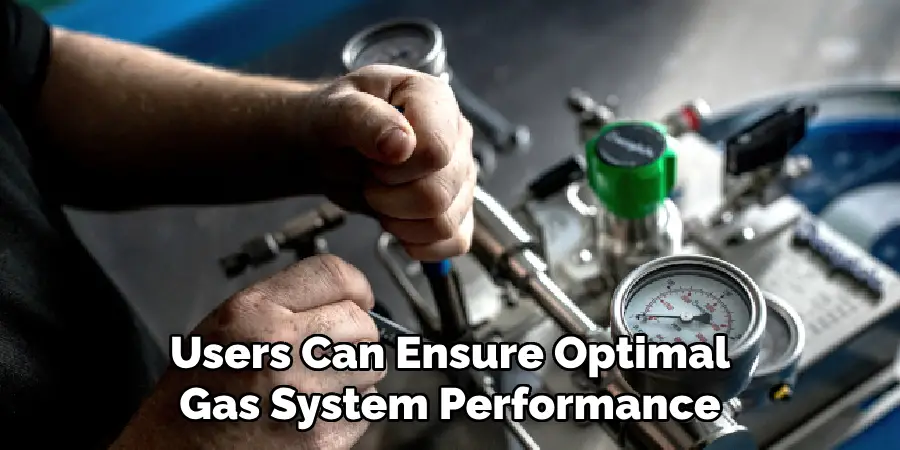
Installation Considerations
Location of Installation
Selecting the ideal location for installing a gas regulator involves evaluating several environmental factors to ensure both optimal performance and safety.
- Indoor vs. Outdoor:
- Choosing the Appropriate Location Based on Environmental Factors: The location for installing a gas regulator should be dictated by environmental conditions. Indoor installations benefit from protection against adverse weather conditions, which can extend the regulator’s lifespan and maintain performance stability. Conversely, outdoor installations may be necessary if indoor space is limited or if certain gases require specific venting and handling measures. It is critical to shield outdoor regulators from direct sunlight, rain, and extreme temperature variations to prevent premature wear and functionality issues.
- Accessibility:
- Ensuring the Regulator is Easily Accessible for Maintenance: Easy access to the gas regulator is vital for routine maintenance, inspection, and emergency interventions. The location should allow for straightforward access by maintenance personnel without the need for disassembling significant portions of the system. Installing the regulator at an appropriate height and in a clear, unobstructed area can facilitate efficient and timely maintenance procedures.
Piping and Connections
Proper piping and secure connections are crucial steps in the installation process to ensure leak-free and efficient gas flow throughout the system.
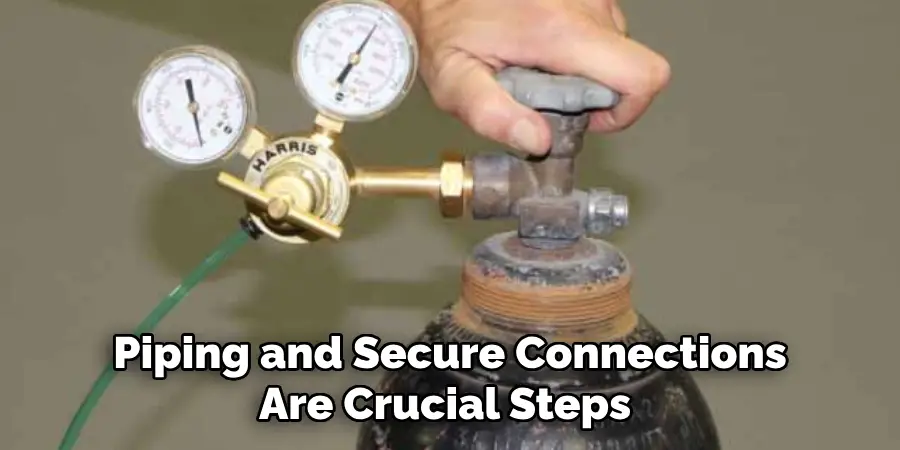
- Proper Sizing:
- Importance of Matching Regulator Connections to Piping Sizes: It is essential to accurately match regulator connections to the existing piping system’s size. Incorrect sizing can lead to pressure drops, flow restrictions, or even damage to both the regulator and the piping. Ensuring that all fittings and connections are appropriately sized will result in a seamless integration, enhancing the system’s overall functionality and safety.
- Leak Testing:
- Steps for Ensuring All Connections Are Leak-free: Once the regulator and piping are connected, rigorous leak testing should be performed. This includes using soapy water around connections to identify bubbles indicative of leaks or employing electronic gas detectors for more precision. All identified leaks must be promptly addressed to prevent gas loss, enhance safety, and ensure regulatory compliance.
Mounting and Securing
Properly mounting and securing the gas regulator is fundamental to prevent movement and ensure sustained operational efficacy.
- Proper Mounting:
- Ensuring the Regulator is Securely Mounted to Prevent Movement: The regulator must be firmly mounted to a stable structure to prevent it from shifting or vibrating during operation, which could lead to malfunctions or disconnections. This secure mounting should employ brackets or clamps that are robust enough to handle the regulator’s weight and the operational stress it may encounter. Ensuring a solid, motionless installation extends the regulator’s service life and maintains system integrity and safety.
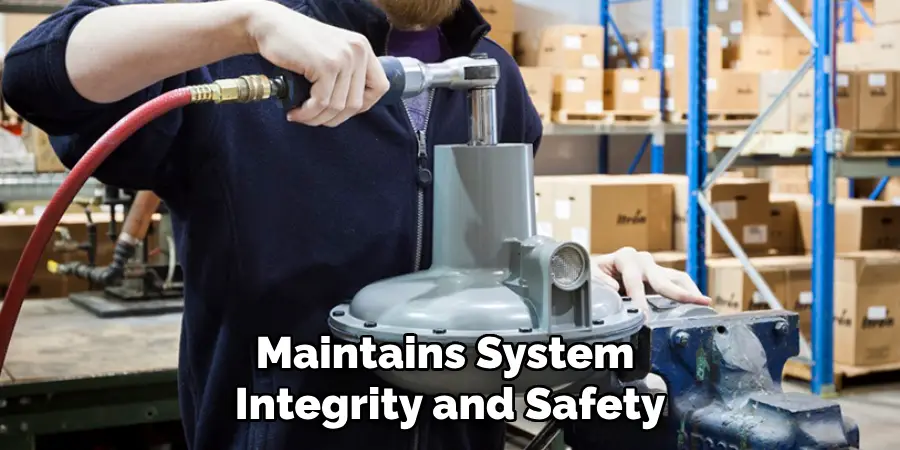
Maintenance and Troubleshooting
Regular Maintenance
Regular maintenance of gas regulators is essential to ensure they function correctly and safely over time. Following a structured maintenance schedule can prevent catastrophic failures and enhance the equipment’s longevity.
- Inspection Schedule:
- Importance of Regular Inspections and Maintenance: Regular inspections and maintenance are crucial for identifying early signs of wear and tear, corrosion, and potential malfunctions. Routine checks should be scheduled based on the manufacturer’s recommendations and the specific conditions of the operating environment. Regular inspections help maintain system efficiency and safety by catching issues before they escalate into serious problems.
- Cleaning and Replacing Parts:
- Steps for Cleaning and Replacing Worn Parts: Cleaning and replacing parts are critical components of regulator maintenance. Begin by shutting off the gas supply and depressurizing the system according to safety protocols. Disassemble the regulator following the manufacturer’s guidelines, and clean all parts using appropriate solvents and brushes to remove any buildup or debris. Inspect all components for signs of wear or damage. Replace any worn or damaged parts, ensuring the use of genuine replacement parts as specified by the manufacturer. Reassemble the regulator, perform a leak test, and gradually reintroduce gas to ensure proper functioning.
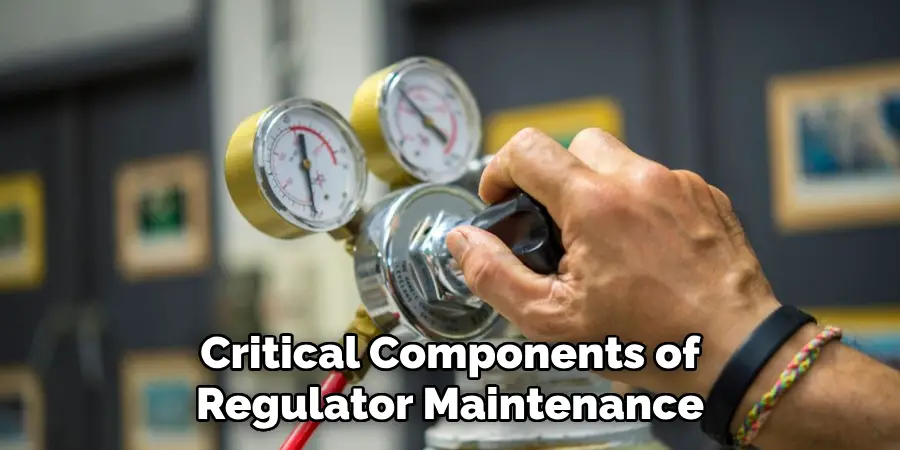
Common Issues and Solutions
Despite regular maintenance, issues can still arise. Understanding common problems and their solutions can help in resolving them quickly and efficiently.
- Leakage:
- Identifying and Fixing Leaks: Leakage is a common issue in gas regulators that can lead to inefficiency and potential hazards. Identify leaks by applying a soapy water solution to connections and joints — bubbles will indicate a leak. Alternatively, use an electronic gas detector for more precision. Once a leak is identified, tighten connections or replace faulty parts to resolve the issue. Regular leak checks should be part of the maintenance routine to ensure continued safety.
- Pressure Fluctuations:
- Troubleshooting Inconsistent Pressure: Inconsistent pressure can stem from various causes, including debris in the regulator, worn-out components, or improper setting adjustments. First, check for obstructions or debris within the regulator and clean if necessary. Inspect the diaphragm and seals for wear and replace them if needed. Ensure that the regulator is properly adjusted according to the system’s requirements and that the pressure settings are accurate.
- Regulator Failure:
- Signs of Regulator Failure and Necessary Actions: Complete regulator failure can occur due to severe internal damage, corrosion, or manufacturing defects. Signs of regulator failure include unresponsive pressure settings, continuous gas leaks, or total cessation of gas flow. If the regulator fails, it should be immediately taken out of service. Assess whether the failure is due to reparable damage or if a complete replacement is required. Always consult the manufacturer’s guidelines when dealing with regulator failures to ensure proper handling and rectification.
Conclusion
In this document, we’ve discussed the critical steps and considerations in sizing a gas regulator. Understanding the specific gas requirements, calculating the total BTU/hr, converting to cubic feet per hour (CFH), and selecting a regulator capable of managing the calculated demand is pivotal. Whether for residential, commercial, or industrial applications, knowing how to size a gas regulator properly ensures the system operates efficiently.
Safety remains paramount in any gas system setup. Following manufacturer guidelines, adhering to local codes, and seeking professional help for complex installations are essential to prevent hazards. Regular inspections and timely address of issues like leaks or pressure fluctuations safeguard the system’s integrity.
Regular reviews and maintenance of gas systems are crucial to sustaining their efficiency and safety. By keeping abreast of potential issues and performing necessary upkeep; users can ensure their systems function optimally over time. Understanding how to size a gas regulator accurately is just the start; ongoing diligence secures lasting performance and safety.
You can check it out to Replace Gasket in Toilet Tank

